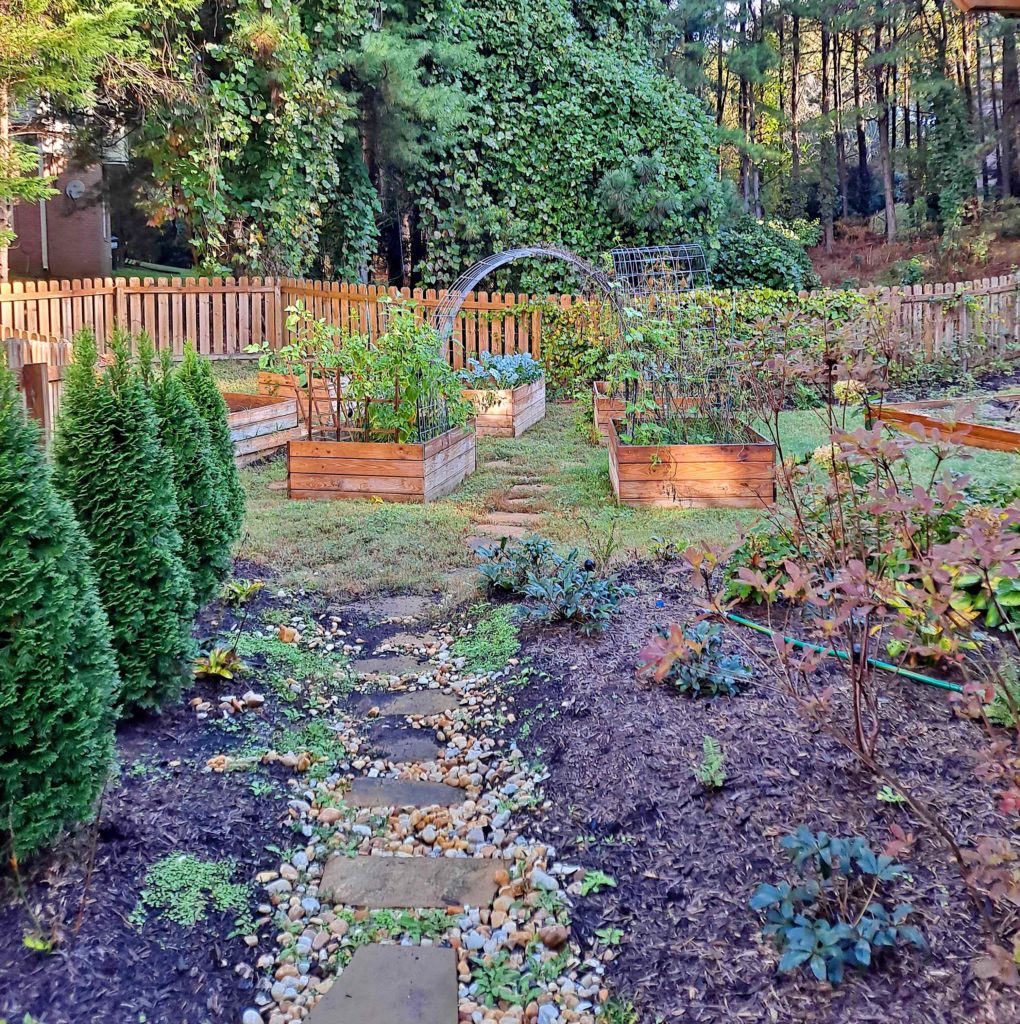
Raised beds and diversified plantings provide this Shades of Green client the opportunity to grow food for their family and create positive ecological impact in their yard despite conventional HOA restrictions.
At Shades of Green, we get a large number of inquiries from potential clients that live in properties with HOAs that are interested in incorporating ecological design and growing food into their landscapes but are concerned that they won’t be able to because of HOA covenants and restrictions. While we’ve all heard stories of overly-controlling or outright unreasonable HOAs, the vast majority of our experience working with these associations and similar organizations has been positive.
We often work with HOAs that have strict rules and guidelines, especially in regards to front yards. Ultimately, though, it all comes down to education and proper planning (plus some good old fashioned charm). The process usually involves two straightforward steps on our end:
- 1. We review the covenants that dictate landscape design standards. In our experience, most of these rules involve maintaining a fixed percentage of evergreens, continuity of materials and/or planting bed, and lawn species specifications.
- 2. We present a plan to the HOA and integrate any feedback we receive from them. Typically the biggest push back we’ve experienced is in species selection for lawns and front yards. The other points of HOA covenants, such as evergreen percentages, are really just a matter of choosing alternative species that both fit the criteria outlined in the covenants and provide food or ecological function.
So far, by explaining the intent and benefits of our regenerative landscaping designs to the HOAs in these neighborhoods, we have been able to receive approval without issue. We have been able to work rain gardens, fruit trees, herbs and native meadow species into designs for both front and back yards, and have installed countless raised beds for growing vegetables.
One of the exciting things about speaking with and working with HOAs is that we have an opportunity to shift folks’ perception about permaculture, and have dialogue with people that may previously be unfamiliar with the potential to create productive landscapes in places that would otherwise be planted solely with ornamental species and conventional landscaping practices. One of the greatest opportunities that we have as a society to create positive environmental impact is to rethink how we design and manage residential landscapes.
What has your experience been with implementing permaculture-based practices or designs in neighborhoods or communities with HOAs?